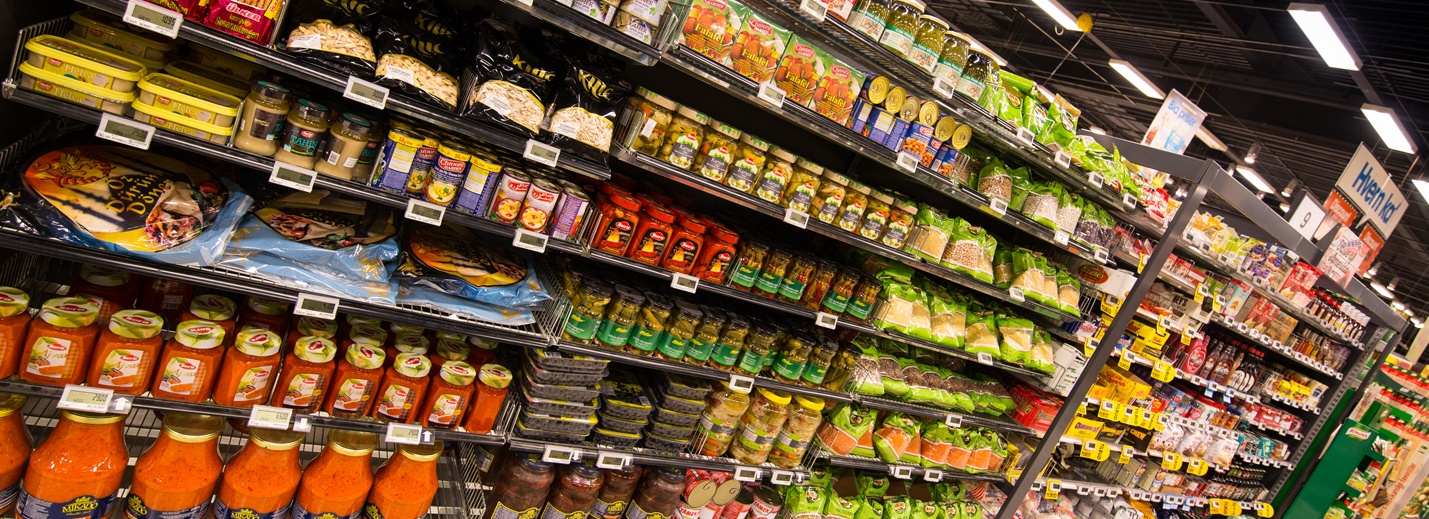
Cultures meet at the supermarket
Immigration leads to more exotic foods popping up on supermarket shelves. So do cultural stereotypes.
By Marlene Jørgensen, marl@sam.sdu.dk , 20-4- 2016
Today we can buy food products such as couscous, flatbread and sushi in most Danish supermarkets. People from different cultures cross paths here on a daily basis and they can see what others are putting in their shopping trolleys.
The supermarket is therefore one of the places where cultural change is most readily visible. Stores adapt their selections to their customer base and consumer preferences, but this is not the only change taking place, explains Assistant Professor Julie Emontspool from the Department of Marketing & Management:
- Interest in other cultures is strong among many Danes, who eat shawarma one day and Indian cuisine the next. People are making their own sushi, and it's all part of how our food culture has become more global, she says.
Everyone is adapting
The SDU researcher has conducted a study in French supermarkets, where the range of speciality foods is even more adapted to ethnic minorities than in Danish supermarkets.
For example, a large part of the French population originates from North Africa. This has, among other things, left its mark on French culture . Couscous is now one of the most popular dishes in the country.
- The debate surrounding immigration often focuses on how new arrivals have to adapt and adjust. We often forget, however, that both sides always learn new things and change when two cultures meet, Emontspool points out.
Several different buyers of the same product
Retailers must therefore take into account the fact that different types of customers are interested in the same products. It's not just about cultural background—it has just as much to do with different levels of expertise.
Some consumers know exactly how to cook couscous from scratch because it is part of their national heritage or they learned to do it. Others prefer ready-made mixes that include all needed spices and that customers only need to add water to.
- It can just as easily be an immigrant who chooses the ready-made mix. If you move away from home and never learned your mother's recipe, for example, or if you just prefer to do it the easy way, says Julie Emontspool.
Avoid stereotypes
The study showed that various stereotypes still prevail. Many customers need foreign foods in portion sizes that suit households of one or two people. These sizes, however, are rarely made.
- Manufacturers have the idea that French families of Moroccan origin are constituted of seven people or more. Some food items are therefore only available in large portions, which means that they go bad before two people can finish them, says the SDU researcher.
- There are also many stereotypes that you should try to avoid. For example, when a Frenchman or a Dane who originates from North Africa walks into a store that uses images of camels or Bedouin tents in their marketing, they will not find the products appealing because these images have nothing to do with their lives—and there have been cases in the past where this has happened.
About the study
Together with her colleague Fatima Regany from Université Lille 2, Julie Emontspool has conducted field studies in 11 French supermarkets. Here they interviewed employees and customers, took photos and drew store maps depicting how different items are located in supermarkets.
Interested in how culture and marketing interact in a globalised world?
Study MSc in Marketing, Globalisation and Culture programme.
Meet the researcher
Julie Emontspool studies the consumer and marketing consequences that arise when different cultures meet. She is assistant professor at the Department of Marketing & Management at SDU.